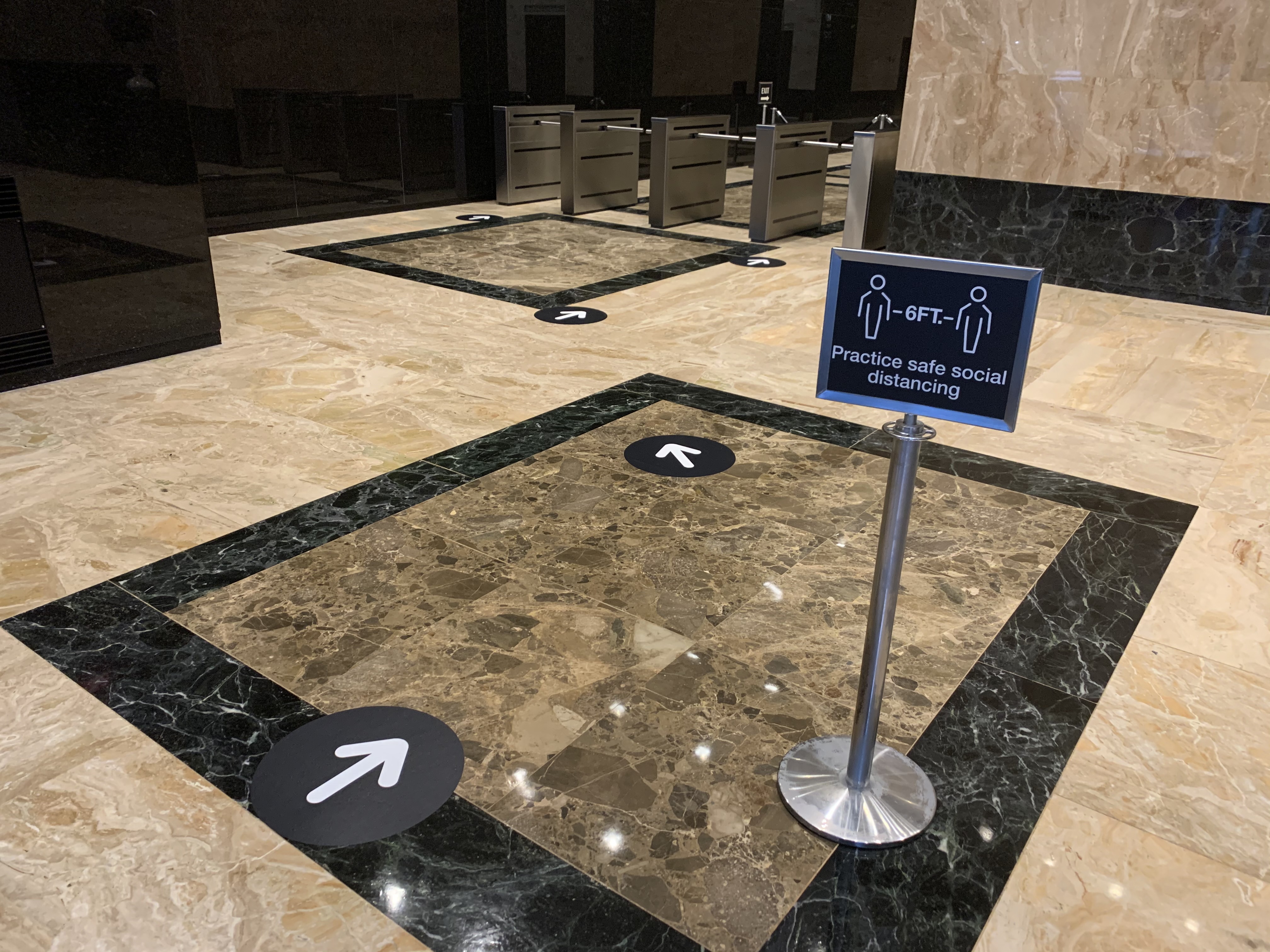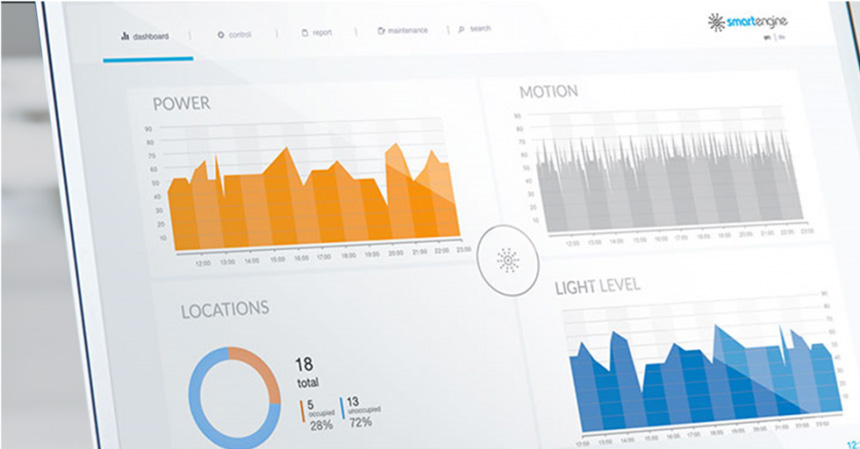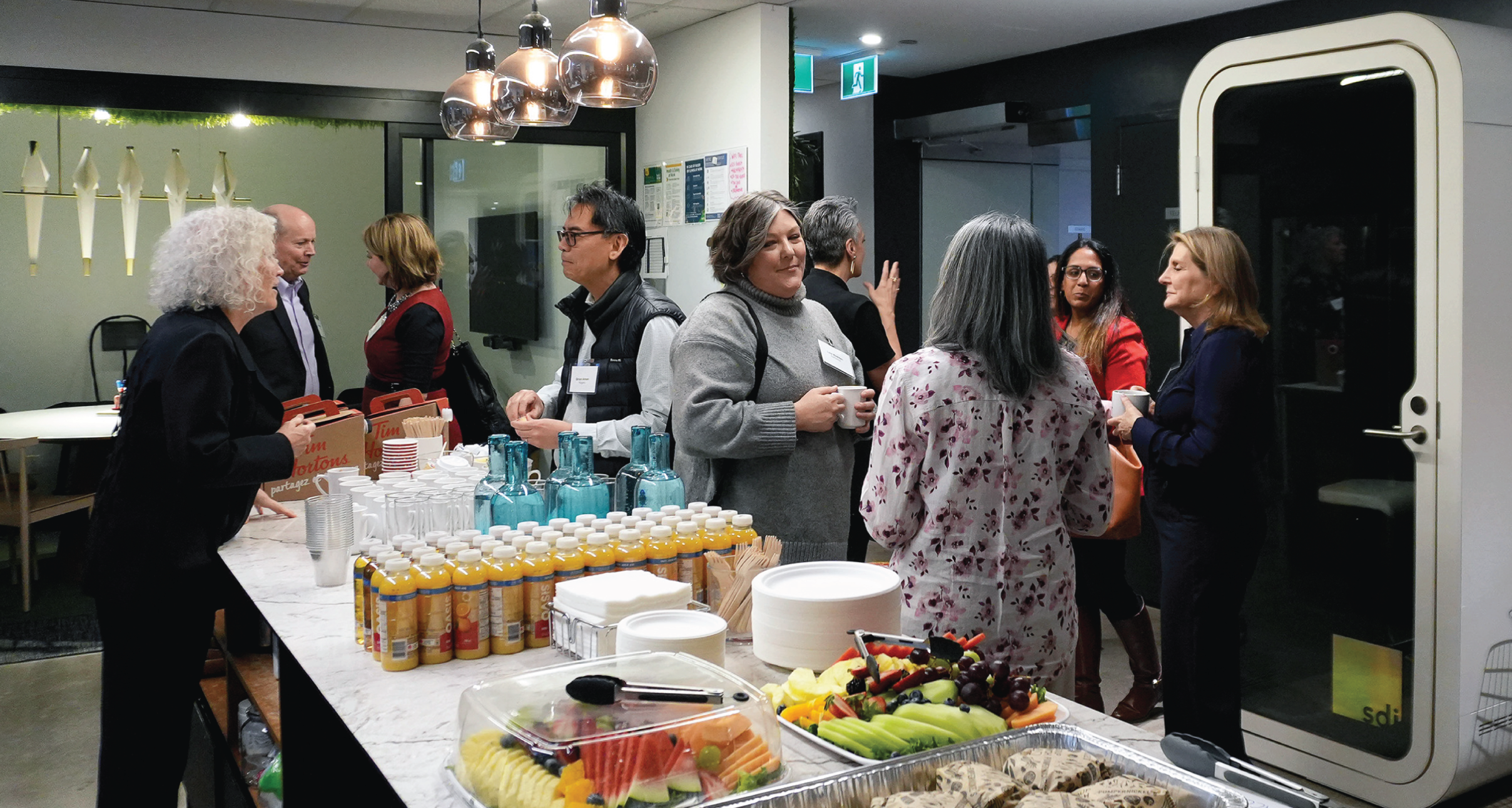Technology & Common Sense Pave the Road to Commercial Re-Occupancy
First and foremost, the safety and well-being of employees must be at the center of any company’s playbook for returning to commercial buildings. Promoting confidence in occupiers will be crucial, which requires transparency from landlords, especially in the types of preparations being made building infrastructures to improve safety, as well as Indoor Air Quality (“IAQ”). Such measures as temperature screening, improved air filtration, and enhanced cleaning practices will be important factors as people return to their offices.
Prior to the pandemic, “densification” was the buzzword for workplace strategy studies. Today, employers and professional service providers must focus on safety and IAQ. Such details as hand sanitizing stations, way-finding signage, and air filtration equipment should be in place before re-occupancy.
The return to the workplace is going to be different. It is yet to be determined how much longer such pandemic-related protocols as wearing masks in common areas, directional signage, etc., will be norm in office environments. But one thing for certain, it will take technology and common sense to define what the future of commercial office space looks like as managed by both Landlords and Occupiers working together.
Workplace Strategy Planning
Creating flexibility within the workspace while managing the ability to social distance and collaborate with others will be another focal point. In-office headcounts will certainly fluctuate, as will employers planning to allow some employees to continue working remotely. Pre-Covid, densification in office design was a practical solution, comprising consolidated workspace that was good for a firm’s bottomline. Moving forward, there will be greater space between workers along with other ongoing changes, all of which are byproducts of the pandemic. The downside of having less personnel working together on-site and other hybrid scenarios is that product deliverables will likely be impeded, and necessary daily in person will have new limitations.
The upside is that workspace planning with the use of intelligent furniture solutions will increase, especially for tenants with already built space. Forward-thinking firms and landlords with pre-built programs will opt to leave spaces open, enabling the occupiers and end-users to plan according to their needs, supplying basic infrastructure. Landlords will and should be embracing the vertical service of Smart Building technology, thinking forward to the wants and needs of future employees and workforce.
Tenants undertaking construction and improvements beyond the scope of furniture, will have to plan for more sustainable space design to achieve a greater level of comfort for employees. There are many benefits to the open workspace environments, but they can also be a distraction to more detailed assignments. Various matrix and data will become the norm through AP platforms, often to the detriment of how much redesign is being considered. People tracking space for meeting reservations, coordinating discussions, and utilization of work product will have to be prepared for adjustments. In the future, employees working within offices must be able to coordinate more easily with those working remotely.
Perhaps this means space requirements will decrease. Data and analytics during this initial period of re-occupancy can provide information that will help determine growth, recruitment, and retention within both a building’s framework and the physical workplace.
At this juncture, we at Cresa are focusing on the future and a new way forward, utilizing the diverse skills of partners spanning such industries as furniture manufacturers, architecture, and technology to achieve mutual goals. Although occupier-focused, we are conducting discussions with landlords and building owners to develop these plans for repositioning the assets they represent. This will only broaden the field for greater asset amenities that our client base of occupiers will demand.
Space planning within the office platform has a new direction. As we prepare for greater re-occupancy in a post-pandemic environment, we are preparing for a brighter future for all office occupiers.







